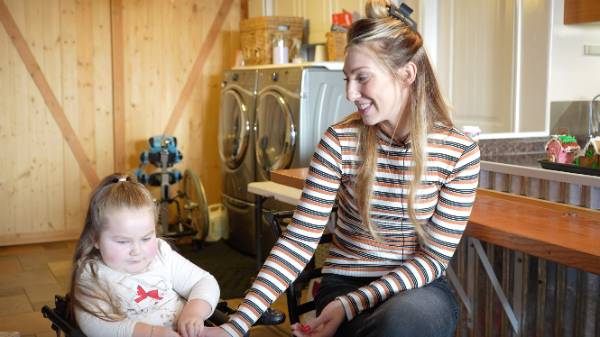Op-Ed Reprinted from the Salt Lake Tribune: Utah’s Support of Families Who Have Children with Disabilities is Largely Lip Service

Utah used to be a model state for Early Intervention, but we have fallen behind.
Published first in the Salt Lake Tribune, July 8, 2024
Utah has always prided itself on being a state that supports and values families. In fact, in 2022, Gov. Spencer Cox established his Utah Office of Families to help spearhead multiple initiatives to support Utah families.
Unfortunately, Utah’s support of families who have children with disabilities is largely lip service. Over the past seven years, Utah has demonstrated that families of children with disabilities are an afterthought instead of a priority.
Early intervention services for young children between the ages of 0-3 is a required federal program mandated under the Individuals with Disabilities Education Act (IDEA). IDEA Part C services, also known as the Early Intervention Program for Infants and Toddlers with Disabilities, play a crucial role in providing developmental interventions and family-centered supports for infants and toddlers with disabilities or developmental delays. The American Academy of Pediatrics reports that 1 in 6 children has a developmental delay or disability. Early Intervention programs provide evidence-based services to infants and toddlers using a family-centered model that builds the competency of parents to support the needs of their children. Services are tailored to each child’s unique needs and encompass various disciplines, including physical therapy, speech-language pathology, occupational therapy, nursing, social work, behavioral specialists, nutritional specialists and developmental therapy specialists.
Early intervention plays a crucial role in providing developmental interventions and family-centered support for infants and toddlers with disabilities or developmental delays. But early intervention doesn’t just serve the child with a disability, it also provides evidence-based services to infants and toddlers using a family-centered model that builds the competency of parents to support the needs of their children. IDEA requires that all eligible children receive evidence-based early intervention services within 90 days of being identified by a parent, service provider, educator or doctor. For example, if a parent is concerned about the developmental progress of their child, they can call the state’s early intervention program to request an assessment and evaluation of their child. But, early intervention programs in Utah face significant challenges in identifying and serving all children because of insufficient funding and personnel shortages.
Although Utah used to be a model state for early intervention, we have fallen behind over the past seven years. National pediatric research suggests that the prevalence of children under age 3 whose development could improve with early intervention services is between 16% and 18%, but only 6.7% of eligible Utah children under age 3 are served by the Baby Watch Early Intervention Program. Utah funds early intervention at a dismal rate of 1.7 hours of early intervention service per month per child, compared to the national average of 4.7 hours per month per child. In fact, the U.S. Department of Education notified the State in June 2023 that Utah’s Early Intervention program is out of compliance and underperforming in multiple domains.
Inadequate funding has led to significant staffing shortages, reduced service frequency and shorter duration of service visits, creating limitations on the scope of services provided to the child and family. Funding for early intervention has one of the best returns on investment in the education and social services sector. Research by the RAND Corporation has demonstrated that the return on investment for each $1 allocated to early intervention ranges from $1.80 to $17.07. That means states can save from $1,400 to nearly $240,000 per child served in Early Intervention. These cost savings translate to millions of dollars annually and mean that fewer state dollars need be spent on special education and adult disability services and supports.
The last time the Utah Department of Health and Human Services and the Utah Legislature increased funding for Utah’s Part C Early Intervention programs was in 2016. A legislative audit in November 2017 also recommended that DHHS should “develop and implement a plan to improve funding for Baby Watch Early Intervention” (p.53), and yet no such plan has been developed or implemented. Much has changed in the world since 2017, and Utah’s early intervention programs have seen significant increases in the number of children served, but there has been no additional funding to support these increased caseloads. Increased caseloads have overwhelmed existing staff, and wage inflation since the COVID-19 pandemic has made hiring and retaining qualified personnel in early intervention programs increasingly difficult because providers are unable to offer competitive wages and benefits to maintain high quality personnel.
If Utah is truly serious about supporting families, they must begin to put their money where their mouth is and figure out how to address the crisis in Utah’s Baby Watch Early Intervention program. Matthew Wappett is the executive director of the Utah State University Institute for Disability Research, Policy & Practice, with an affiliate appointment as a research associate professor in the USU College of Education and Human Services.
Matthew Wappett is the executive director of the Utah State University Institute for Disability Research, Policy & Practice, with an affiliate appointment as a research associate professor in the USU College of Education and Human Services.

